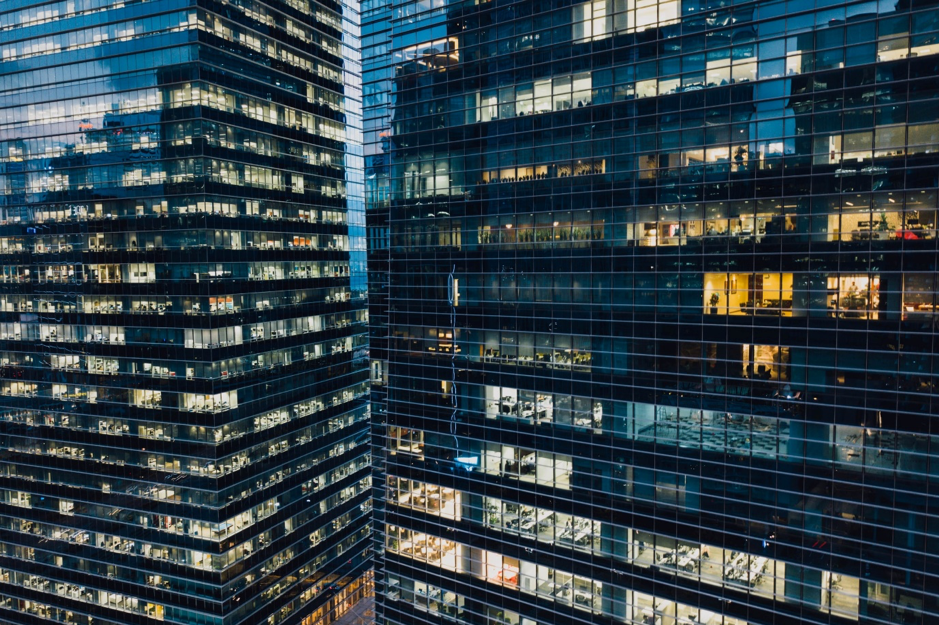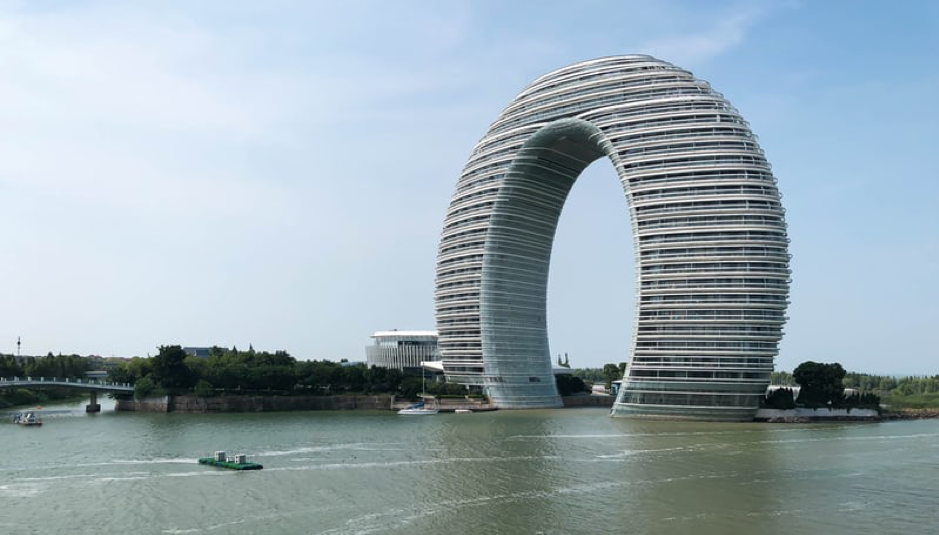How Can FMs Make Workplaces More Attractive to Gen Z?
As the workplace continues to evolve with new norms and expectations, the question remains: will Gen Z adjust, or be the ones reshaping it? Paul Sherwin from office...
Read Full Article
Is the workplace undervalued when it comes to reinforcing an organisation’s values and brand?
Founder and Managing Director of SERVICEBRAND GLOBAL Alan Williams writes about the power facilities have on a company’s brand identity.
Williams coaches leaders of service sector organisations, internationally and in the UK, to deliver values-driven service for sustained performance. He created the 31Practices approach to translating values into practical day-to-day behaviour and is a published author and speaker.
.jpg)
Picture: a photograph of Alan Williams
Work forms a major part of adult life. A job is valuable because of the vast spectrum of human needs it helps to fulfil - from providing the resources to provide shelter and security to the self-value and self-actualization people feel when they do something meaningful. It has also become a social norm for a career to be tied to personal identity, and many people are defined by their careers.
The office building is the most tangible reflection of a profound change in employment patterns that have occurred over the last one hundred years, and there are signs that the impact of COVID-19 might be creating another long-term shift. In present-day America, northern Europe, and Japan, at least 50 per cent of the working population is employed in office settings, compared to five per cent at the beginning of the 20th century.
Just look at how this has changed the skylines of any major city in recent years. Over the past thirty years, there has been an almost silent revolution in the office workplace, because it is only when you take time to look back to the 1980s and before that the magnitude of the difference is evident.
Think of a world at work with typewriters, fax and telex machines, hard-wired phones … and no mobile phones, laptops, Wi-Fi, or Voice over Internet Protocol (VoiP). Thirty years ago, the office was the only place where people in knowledge-based industries had the tools and resources to be able to do their work. Technology has enabled a different approach in workplaces because it has provided convenience, connectivity, and freedom of movement for many employees. Now, people often complain that the technology they use personally is better, faster, has more memory, lighter etc than the equipment provided at work.
As a result, more people than ever want and expect flexible work arrangements. 76 per cent of millennials would take a pay cut for more flexibility. And it’s not just that generation: 96 per cent of the workforce needs some form of flexibility, but just 47 per cent have access to it.
The key point here is that the office as a place of work is no longer “compulsory” and the only option. Employees now have a choice. The corporate real estate and facilities management function therefore needs to work harder to make going to the office a worthwhile and desirable option and to motivate employees to work there.
Psychologically, it is like the difference between going to school (attendance required) versus visiting a shopping centre (online option available). Similarly, there needs to be a shift from a focus on the workspace and a range of associated services to a focus on the total employee experience and employee wellbeing, and how this helps them to be and perform at their best.
“A workplace that is powered by the human experience goes beyond a work-life balance. It drives how people feel about their place of work. How empowered, engaged and fulfilled they are, it’s the purposeful fusion of life and work based on authentic human experiences.“
–Dr. Marie Puybaraud

Picture: a photograph of a modern skyscraper. Image Credit: Artur Lysyuk on Unsplash
Buildings are highly visible representations of the brand identity. This can be at a basic level evidenced by the buildings-as-billboards skyline of Hong Kong and other cities. At a more sophisticated level, Bloomberg’s European Headquarters in London was created as an exemplar of sustainable design that would endure and improve the surrounding City of London public realm, and Microsoft’s new Silicon Valley Campus will make a statement about the organization’s embodiment of innovation. Both examples make a public statement to all stakeholders about what these organizations value.
"The key point here is that the office as a place of work is no longer 'compulsory' and the only option. Employees now have a choice. The corporate real estate and facilities management function therefore needs to work harder to make going to the office a worthwhile and desirable option and to motivate employees to work there. "
–Alan Williams
Founder, SERVICEBRAND GLOBAL
Inside the building, the organisation’s brand and values are reinforced or detracted from with the design of the space, the range and level of facilities and services provided, and the behaviour of the people delivering these services. In addition to the desk or work area, there is a whole host of services and facilities: security, audiovisual services, catering, client hospitality, mail services, document printing and storage, help desk, cleaning, travel and taxi booking, vending, recycling, photocopying, stationery, maintenance, engineering, office moves, meeting rooms, concierge services, refreshment areas. Facilities can include an on-site restaurant, meeting space, booths for private calls, a gym, hairdressing, prayer rooms, creche and even sleep pods. Think of offices as “hotels with desks instead of beds”.
You might be wondering how these services and facilities can reinforce the organisation's brand and values, so consider this example:
A utility company has a core value of “Our Environment” and in the annual report the Chair is quoted as saying that “we will exceed local environmental regulations wherever we operate in the world” and “we take the stewardship of our planet seriously and we are striving every day to improve our contribution”. The same company has hot beverage machines in the offices which use (virtually indestructible) foil sachets, the senior directors drive gas-guzzling company cars, there is a culture of using copies of printed full-colour documents and cleaning takes place at night which needs the building lights to be on.
On a scale of one-ten to what extent is this organisation living the value of “Our Environment”? To arrive at your answer, did you attach more importance to the Chair’s words in the annual report or to your personal experience and knowledge of daily life in the office? From your workplace experience, what stories would you tell colleagues and friends about the organisation’s values-based credentials?
This example shows how corporate real estate services, facilities and the behaviour of the service team can reinforce or detract from the organisation’s brand and values to existing employees and visitors, including prospective employees. The corporate real estate or facilities management function responsible for designing and delivering the office facilities and services therefore plays a more important role as a custodian of the organisation’s brand than you might have thought originally. What stories do you/will you/would you tell colleagues and friends about your organisation’s values based on the workplace experience?
Main Picture: a photograph of some city office blocks. Image Credit: CHUTTERSNAP on Unsplash
Article written by Alan Williams | Published 03 March 2021
As the workplace continues to evolve with new norms and expectations, the question remains: will Gen Z adjust, or be the ones reshaping it? Paul Sherwin from office...
Read Full ArticleGlobal travel brand Skyscanner has a new Edinburgh hub in the heart of Quartermile. The new office spans two floors and 25,000 sq ft of space, and has been completely...
Read Full ArticleMute's new headquarters in Poland is Europe's first office built entirely using a modular system. The project showcases how modular office systems can reduce...
Read Full ArticleA guide to help facilities managers create workspaces for the hybrid working generation has been published by the British Council for Offices. The BCO’s flagship...
Read Full ArticleBW: Workplace Experts has completed the major fit-out of Virgin Media O2’s London headquarters in Paddington, marking the first office space investment since the...
Read Full ArticleTravel search engine Skyscanner’s London office has been refurbished by BW: Workplace Experts. The company occupies two floors of the Ilona Rose building in Soho...
Read Full ArticleA new office building in Southampton Port has been constructed entirely out of converted shipping containers, saving around 40 per cent against the cost of a traditional...
Read Full ArticleA design company has surveyed 2,000 office workers who experience menstruation or menopause to explore how workplace design can better support them. People of...
Read Full ArticleA European alliance of workplace experts has uncovered what’s in store for the future of the office, creating AI mockups of what these spaces will look...
Read Full ArticleLondon has seen a record volume of office refurbishment starts, according to Deloitte’s Summer 2023 London Office Crane Survey. 37 new refurbishment schemes...
Read Full Article